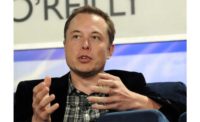Elon Musk is famous for always looking at ways to bring the future to us in faster and previously unthought-of ways. While he is most well-known for his advances at SpaceX and his electronic sports cars, his new product is one he is hoping is the latest game-changer.
While discussing Tesla’s new Model Y SUV on Twitter earlier in March, the philanthropist and technology entrepreneur confirmed that his company could make use of their current heat pump technology to develop a smart HVAC system for home use.
HVAC industry players are noticing a dramatic rise in the technology’s popularity due to companies investing in HVAC not only in order to address the COVID-19 pandemic, but also for their environmental sustainability in the long run. Smart HVAC systems would definitely be another step in the right direction for Tesla.
In this article, we’ll discuss the state of the HVAC industry as a whole, and then dive into how Tesla has developed their new smart HVAC system.
The Good, the Bad, and the Transformed
Smart HVAC controls will be the future of the HVAC industry. The public’s need for efficient energy use and building automation systems, along with the growing adoption of IoT, will see the industry reach $27.04 billion by 2023.
Unfortunately, the growth of smart HVAC controls will also bring a multitude of opportunities to those who would like to gain access to these smart devices in order to steal sensitive data for nefarious purposes.
Cyberattacks against smart home devices are currently growing by a staggering 100 percent each year. As such, it will be crucial going forward that HVAC companies ensure that their own systems are protected against cyberattacks in order to mitigate the chances of becoming unwilling accomplices to cybercriminals wishing to make use of their systems to gain access to their customers or end users.
HVAC companies can accomplish greater security through ensuring their accounting systems are protected with 256-bit SSL encryption to help protect financial data and keeping their data protected in an HIPAA-compliant data recovery lab.
The good news is that much of the growth of HVAC has been and will continue to be achieved by greater energy efficiency. This is accomplished through the sensors within smart systems that can communicate to thermostats or home HVAC systems via the cloud with connected devices such as smartphones.
Due to the increase of internet users over the last several years, new opportunities for home automation and products like remote access controls, wireless thermostats, and smart vents make the smart HVAC segment attractive not only for its usability, but also for its opportunities to create tailored and personalized luxury.
How Tesla’s Model Y Leads To A New HVAC Product
For Tesla’s upcoming Model Y crossover, the engineering team went back to the drawing board to create a solution for heating, as well as the necessary battery range to reach their targets.
Tesla’s biggest challenge with regards to their batteries was performance during cold weather. Their solution was the new heat pump that Musk has said represents some of the best engineering he has seen in a long time.
Musk has previously voiced his support for smart HVAC systems for the home. However, it may finally become part of Tesla’s overall strategy, as Musk confirmed that his home HVAC would be quiet and include some form of humidity control and a HEPA filter.
When looking at connectivity, Musk has indicated that a home HVAC system should be able to communicate with a car. For example, it should know when to adjust the humidity and temperature so that the homeowner would walk into ideal circumstances upon his or her arrival. It would also need to know exactly when the homeowner is returning home in order to activate or deactivate home security systems, which have become increasingly advanced in recent years to the point that they can recognize faces and allow wireless, automated control.
Although we already have the technology to keep home temperatures at a certain level, humidity and particle control is something Tesla believes in. Tesla has already gained considerable experience when it comes to air management. For instance, Tesla’s Model X SUV (launched in 2015) came with a bioweapon defense mode, used with great success during the 2019 California wildfires. This defense mode can filter the air from outside for circulation inside the vehicle.
Although we may never be certain of its actual bioweapon protection capabilities, Tesla has proven they have the know-how when it comes to the filtering of particulate matter at high levels. This bioweapon mode has also proven effective in reducing asthma attacks.
Musk has voiced his goal to transition the world onto sustainable energy on more than one occasion, and his company already has a variety of products available that pushes towards this goal. The electric vehicles are one component, addressing one of the world’s heaviest polluters, but their revolutionary batteries (used in both their car and home installations) also store clean energy.
Right now, the biggest question is whether Tesla should be broadening its scope, considering its current capacity challenges when it comes to their solar roofs and the COVID-19 assistance they are offering. With new major new product launches coming up, perhaps some further expanded use of Tesla’s technology to enter new markets could be the way forward.









